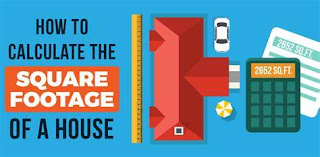Unraveling the Mysteries of Interior Square Footage in Real Estate: Enclosed Patios and the Square Footage Debate
Introduction
When it comes to buying or selling a home, one of the crucial factors that influences the value is the square footage. However, the calculation of interior square footage can become a complex and contentious issue, particularly when it involves enclosed patio spaces. In this article, we will explore the nuances of what constitutes the interior square footage of a home, shedding light on the potential discrepancies that could lead to overvaluation and financial implications for both sellers and buyers.
The Enclosed Patio Dilemma
Recently, I toured two homes that had a seemingly common feature – both had enclosed their patio spaces after the initial construction. This decision to enclose patios poses a challenge when it comes to accurately determining the interior square footage of a home. The taxing authority, in both cases, was unaware of these alterations, leaving room for potential miscalculations and financial consequences.
Case Studies
In the first example, a home was listed with 2482 square feet, including a 500-square-foot enclosed patio. In the second case, another property was listed with 2925 square feet, with a 600-square-foot enclosed patio. The critical point of contention arises from the fact that these enclosed spaces lacked central heating and air conditioning. The question then arises: Can these spaces be rightfully included in the total interior square footage?
Agent's Perspective
When questioned, the real estate agents for both properties seemed confident in their decision to include the enclosed patio spaces in the total square footage. The agents justified this inclusion based on the presence of a wall-mounted heating and air conditioning unit in one case and a window air conditioning unit and a standalone electric heater in the other.
However, it raises an important issue: Is the presence of these non-central heating and air conditioning systems sufficient to consider an enclosed patio as part of the overall interior square footage? If not, the consequences could be substantial, potentially leading to overvalued properties and financial loss for both sellers and buyers.
Tax Records Analysis
To verify the accuracy of the listed square footage, I examined the tax records for both properties. Surprisingly, the interior square footage listed on the tax records did not include the enclosed patio spaces. This discrepancy suggests that the real estate agents might have overstated the square footage of the homes, potentially leading to an overvaluation of the properties.
Financial Implications
If real estate agents are indeed listing homes with more square footage than allowed, they stand to make larger commissions when the properties are sold. This raises ethical concerns about transparency and the duty of agents to provide accurate information to both sellers and buyers. On the other hand, if the enclosed patio spaces have not been registered with the tax collector, it deprives the tax collector of revenue they would have collected based on the larger square footage.
Buyer Beware
The most significant impact may be on the potential buyers. If they are paying for a certain amount of square footage and only receiving a portion of that due to the exclusion of enclosed patio spaces, they are essentially overpaying for the property. This potential disparity underscores the need for clarity and standardized regulations to protect consumers from unknowingly making substantial financial commitments.
Defining Interior Square Footage
So, what constitutes proper accounting for the interior square footage of a home? Does a property require central heating and air conditioning for the square footage to be counted in the overall interior square footage? Or can heating and air conditioning units, such as wall-mounted or window units, along with standalone electric heaters, suffice for enclosed patio spaces to be considered part of the overall interior square footage?
Lack of Clarity
Despite the financial implications and potential legal ramifications, it appears that there is no definitive answer to these questions. The real estate agents I spoke to seemed uncertain, highlighting a lack of education and clarity on this subject within the industry. This ambiguity leaves room for misunderstandings, misinterpretations, and potential disputes between buyers, sellers, and taxing authorities.
The Need for Education
It is crucial for real estate agents to be better educated on the intricacies of interior square footage calculations, especially when it involves enclosed patio spaces. A lack of awareness could lead to unintentional misrepresentations and financial consequences for all parties involved. Without a clear legal ruling or guidance from attorneys and the courts, the real estate industry remains in a gray area when it comes to accurately determining and disclosing the interior square footage of homes.
Conclusion
The debate over what constitutes the proper accounting for the interior square footage of a home, especially when it comes to enclosed patio spaces, remains a complex and unresolved issue. The potential financial implications for sellers, buyers, and taxing authorities underscore the need for clear guidelines and education within the real estate industry. Until a definitive legal ruling provides clarity, consumers must remain vigilant and seek transparency from real estate agents to ensure they are not paying for something they are not getting. The quest for a standardized approach to interior square footage calculations continues, emphasizing the importance of informed decision-making in the real estate market.

No comments:
Post a Comment